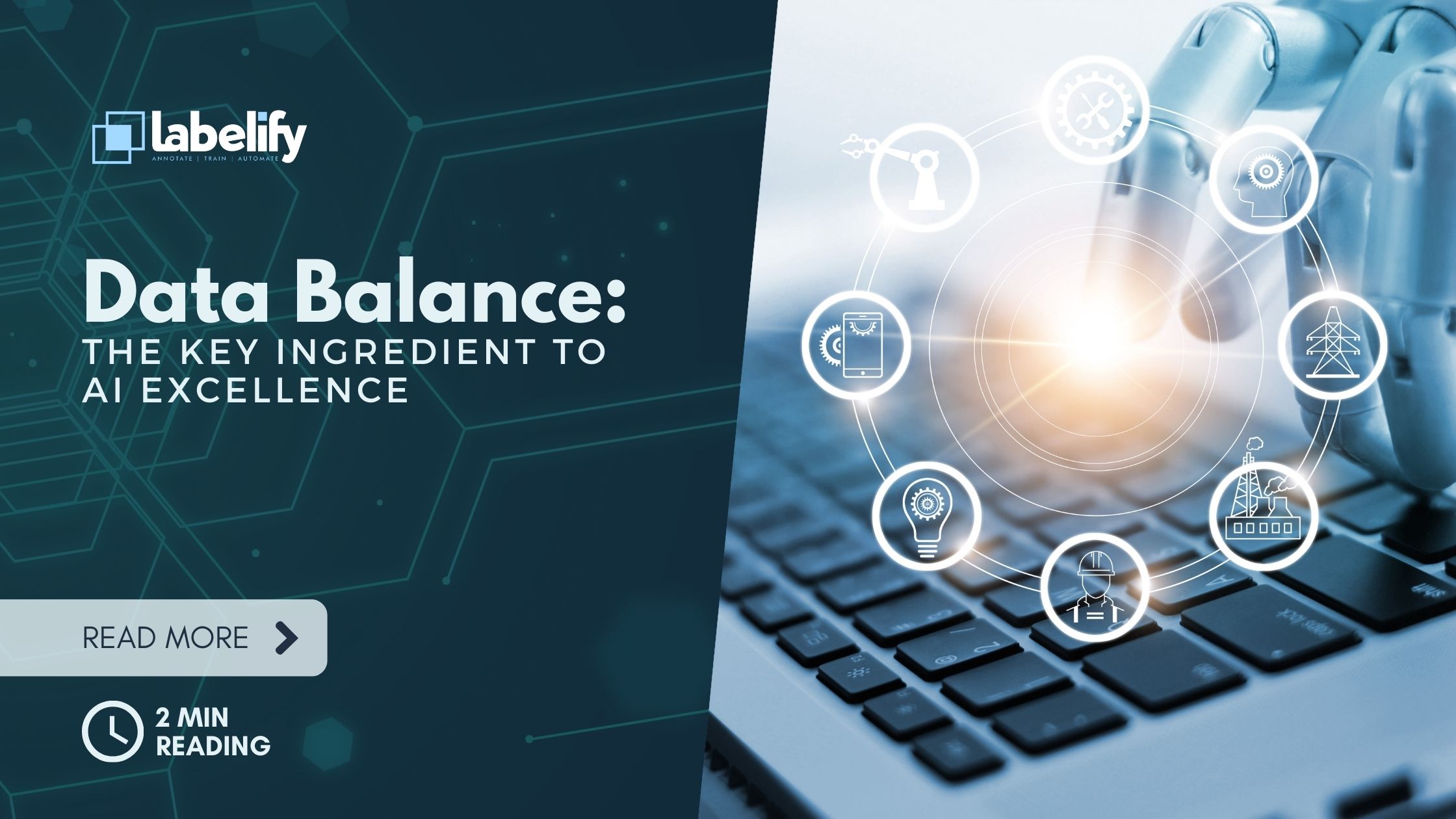We’ve discovered the key to AI success: the perfect data balance. It’s not just about quantity, but also quality.
In our journey into the realm of artificial intelligence, we’ve realized that accurate, reliable, and representative data is crucial. We must consider factors like outliers and environmental conditions that can impact results.
By finding the right balance and implementing advanced techniques, we can liberate our AI models, ensuring accuracy, reliability, and transformative power.
Let’s unlock the secret to AI success together.
Conclusiones clave
- The amount of data needed for an AI model depends on the complexity of the problem, the algorithm used, and the number of features in the dataset.
- Finding the balance between data quantity and quality is crucial for optimal model performance.
- The concept of the Goldilocks Zone helps in finding the right amount and distribution of data.
- AI models can be trained to only accept relevant data for analysis.
The Importance of Data Quantity
Data quantity plays a crucial role in the success of AI models. In the quest for liberation through AI, we must recognize that more data isn’t always better. It’s the quality of the data that truly matters.
However, we can’t ignore the impact of data quantity. With the right amount of data, we can unlock the true potential of AI models and revolutionize the way we perceive the world.
Data augmentation techniques allow us to generate more diverse and representative data, addressing the issue of unbalanced datasets. By incorporating these techniques, we can ensure that our AI models are trained on a rich and varied dataset, leading to more accurate and robust predictions.
In our pursuit of liberation, let’s embrace the power of data quantity and unleash the full potential of AI.
The Significance of Data Quality
With the right amount of data, we can unlock the true potential of AI models and revolutionize the way we perceive the world.
However, in order to achieve this, the significance of data quality can’t be overstated. The impact of data quality on AI performance is immense. Clean, accurate, and reliable data is essential for training AI models that can make accurate predictions and provide optimum results.
To ensure high quality data, we need to implement strategies such as leveraging honeypots, employing consensus building, qualifying golden data sets, verifying annotations, and implementing auto QA. These practices help in maintaining data quality and improving the accuracy of AI models.
Understanding Data Variance
To fully comprehend the impact of data quality on AI performance, it’s crucial to understand the role of data variance. Overcoming data variability is essential in achieving optimal results with AI. Here are four key points to consider regarding the impact of data variance on AI performance:
- Different lighting conditions: Variations in lighting, such as day and night, can significantly affect the quality of image data captured by AI models. Understanding and accounting for these variances is vital for accurate analysis and predictions.
- Seasonality effects: Outdoor image datasets can be impacted by changes in seasons, leading to variations in object appearance and lighting conditions. Adapting to these seasonal fluctuations is necessary to ensure consistent and reliable results.
- Camera and angle variances: The use of different cameras or capturing images from various angles can introduce discrepancies in image quality. AI models must be trained to recognize and adapt to these variances for accurate recognition and analysis.
- Other factors: Factors like blur, noise, weather conditions, and environmental elements can also affect the quality of image datasets. Addressing these factors and finding ways to mitigate their impact is crucial for achieving optimal AI performance.
Understanding and overcoming data variance is essential for liberating AI systems from limitations and unlocking their full potential in accurately analyzing and predicting outcomes.
Finding the Perfect Data Balance
Achieving the optimal balance between quantity and quality of data is crucial for successful AI implementation. As visionaries in the field of AI, we understand the impact of data imbalance on AI performance.
It’s a delicate trade-off between data quantity and data quality that holds the key to unlocking the full potential of AI. Too much data can overwhelm the system, while too little can lead to poor performance.
Our disruptive approach focuses on finding the Goldilocks Zone, where the right amount and distribution of data can be achieved. By leveraging AI, we can reduce data quantity by training models to only accept relevant data, distilling essential insights and improving efficiency.
We’re liberating AI from the burden of excessive data, enabling accurate predictions and optimum results.
AI’s Role in Reducing Data Quantity
By leveraging AI, we can reduce the quantity of data required for optimal model performance. This is an exciting advancement in the field of AI that brings several benefits to the table:
- Active learning benefits: AI can actively learn from a smaller set of labeled data and intelligently select the most informative samples for training. This reduces the need for large amounts of labeled data, making the process more efficient and cost-effective.
- Reducing data bias: AI can help identify and mitigate data bias by analyzing patterns and making unbiased predictions. This is crucial for ensuring fairness and eliminating discrimination in AI models.
- Improved efficiency: With AI’s ability to analyze and extract insights from vast amounts of unstructured data, we can reduce the quantity of data needed without sacrificing the accuracy and performance of the models. This allows us to streamline the data collection and training process.
- Faster decision-making: By reducing the quantity of data required, AI enables faster decision-making. This is particularly beneficial in time-sensitive situations where real-time insights are crucial.
Through the power of AI, we can liberate ourselves from the constraints of massive data collection and unlock the potential of more efficient and accurate AI models.
Best Practices for Data Quality in AI Projects
By leveraging AI to reduce data quantity, we can now explore the best practices for ensuring data quality in AI projects.
One effective method is leveraging honeypots, which are strategically placed data traps designed to attract and identify malicious or low-quality data. By capturing and analyzing this data, we can gain valuable insights into potential data quality issues and take proactive measures to address them.
Additionally, consensus building plays a crucial role in maintaining data quality. By involving multiple stakeholders and experts in the process of data collection, annotation, and validation, we can ensure a collective agreement on the quality and accuracy of the data.
This collaborative approach fosters transparency, accountability, and accuracy, ultimately leading to more reliable and trustworthy AI models.
Preguntas frecuentes
How Can Data Quantity Affect the Accuracy of an AI Model?
Data quantity has a significant impact on the accuracy of an AI model. Limited data can lead to inadequate training, resulting in poor performance and inaccurate predictions.
On the other hand, a diverse and abundant dataset enhances the model’s ability to generalize and make more accurate predictions. By incorporating a wide range of data, we can unlock the full potential of AI and liberate it from the constraints of limited data, ultimately achieving greater success and innovation.
What Are the Key Attributes of Data Quality?
Data accuracy and completeness are key attributes of data quality. Ensuring that the data is reliable, consistent, and free from errors is crucial for accurate AI models.
By focusing on these attributes, we can unlock the true potential of AI and achieve liberation from inaccurate and incomplete insights.
Our innovative approach prioritizes data quality, enabling us to disrupt traditional methods and pave the way for a future where AI can truly thrive.
How Can Noise in a Dataset Impact the Results of an AI Model?
The impact of noisy data on AI model performance is significant. It can lead to inaccurate results, hindering the model’s ability to make reliable predictions.
To mitigate the effects of noise in datasets, we employ advanced strategies. We use data preprocessing techniques to remove outliers and irrelevant attributes.
Additionally, we leverage machine learning algorithms to identify and filter out noisy data.
What Factors Can Cause Variance in Image Quality for AI Models?
Factors that can cause variance in image quality for AI models include:
- Lighting conditions, such as day and night lighting, and seasonal changes that affect object appearance.
- Different cameras and angles of capture.
- Variations in image quality due to factors like blur, noise, weather, and environmental conditions.
Understanding and accounting for these factors is essential for achieving accurate and reliable AI models.
How Can AI Models Help Reduce the Amount of Data Needed for Analysis?
AI models help reduce the amount of data needed for analysis by leveraging transfer learning and feature extraction techniques.
By using pre-trained models and extracting relevant features from the data, we can focus on the most important information, reducing the data volume required.
This approach accelerates the training process and allows us to achieve accurate results with less data.
Conclusión
In our quest for AI success, we’ve discovered that finding the perfect balance between data quantity and quality is the key to unlocking the full potential of our AI systems. By understanding the significance of data variance and implementing best practices for data quality, we can ensure that our AI models are accurate, reliable, and truly transformative.
With AI’s ability to reduce data quantity, we’re paving the way for a future where data-driven innovation and disruption will be the norm.




